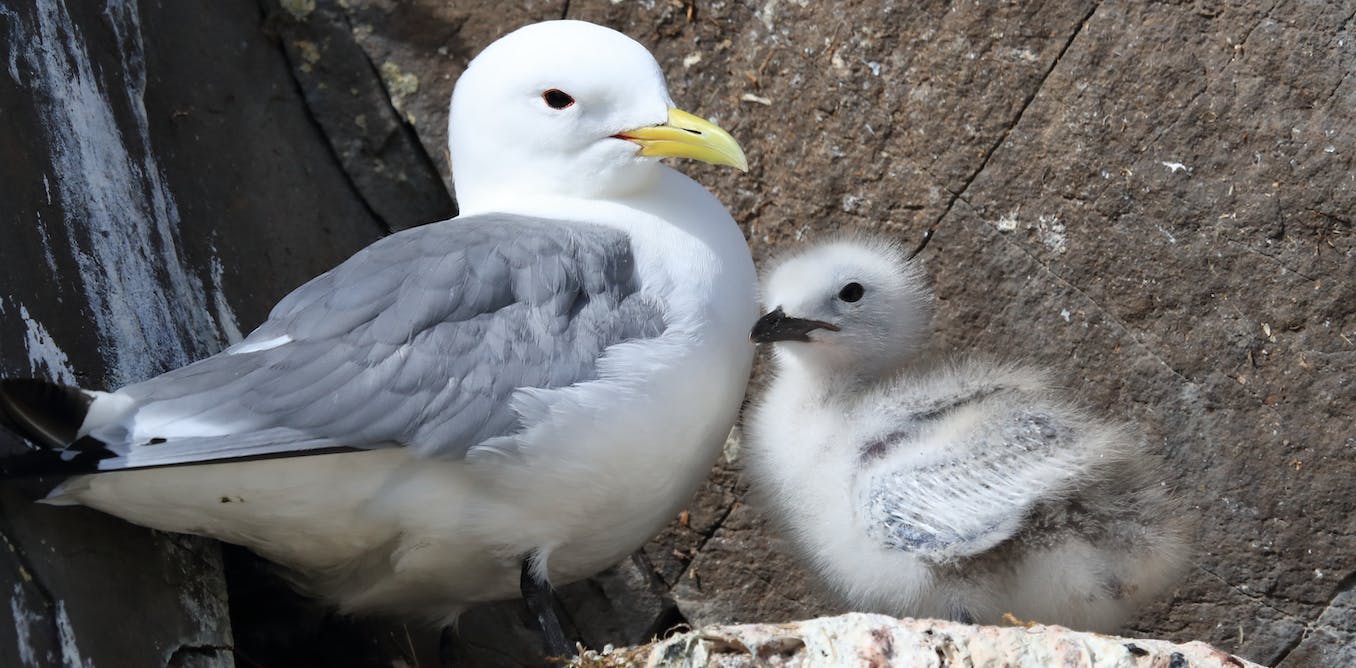|
Getting your Trinity Audio player ready...
|
Is there anything worse than a disappointing first date? It is particularly disheartening when a potential partnership that had so much promise turns out to be one big personality clash. My team’s recent study suggests that other animals may also need to navigate personality clashes, or else face disastrous consequences if they pick the wrong partner.
My team found that seabirds, which usually practice lifelong monogamy, are more likely to lose their chicks when their partner has a dissimilar personality. This, in turn, increases the couple’s chances of re-pairing with other birds, for example through “divorce”.
Defined as “consistent differences in an individual’s behaviour”, personality affects many aspects of an animal’s life, including mating. Previous research has shown that some animals, such as Montagu’s harrier, choose a partner with a similar personality to themselves. Personality may also affect the likelihood of divorce. In our recent study, we found that pairs of a black-legged kittiwakes, a type of seabird, with similar personalities make better parents and that this reduces the likelihood of re-pairing.
Don’t seabirds mate for life?
Divorce is widespread throughout the avian world and some species find a new partner with every breeding attempt. Seabirds are less fickle and rarely divorce but it does happen. They tend to be long-lived and raise only one or two chicks a year, in challenging conditions which preclude being a single parent.
Risto Raunio/Shutterstock
Seabirds do not have time to find a new beau every year and evidence suggests that their partnerships find their rhythm over time, leading to stronger cooperation and higher breeding success. So it pays to stick together.
The death of a chick can trigger divorce in several seabird species, such as Magellanic penguins. But my team were keen to know whether personality also played a role in this behaviour.
Despite looking similar my team’s study species, the black-legged kittiwake, is different from the vagabond seagulls that steal your chips on the promenade. Kittiwakes visit land only to breed. Like swallows, they usually return to the same location every year to reunite with their long-term partner. In summer, you may see this handsome white and grey bird perched atop the UK’s cliffs on its jet black legs.

Altrendo Images/Shutterstock
Although we have kittiwakes in the UK, for our study we needed to travel to Svalbard to visit their artic-dwelling cousins. The reason is accessibility. While most kittiwakes build their homes on treacherous cliffs, the Svalbard kittiwakes nest on the abandoned buildings of a Soviet ghost town.
This means researchers do not need to use boats and climbing gear to keep tabs on them, making it much easier to catch and observe the birds on a regular basis. Researchers return every breeding season to record detailed relationship histories.
How do you give a bird a personality test?
That’s where Butch the Penguin comes in. Kittiwakes feel differently about this little plastic toy depending on where they sit on the personality spectrum. We observe each bird’s response to Butch’s arrival at their nest to determine whether they are bold, shy or somewhere in between. After testing over 200 birds, we searched for links between the birds’ personalities and their success as parents and partners.
When bold mated with bold, and shy with shy, their chicks were more likely to survive. Bold and shy birds have different priorities when foraging at sea. For example, bold kittiwakes tend to visit the same foraging locations repeatedly, while shy birds are quick to adjust their strategy in the face of environmental change.
If pair members take foraging trips of different lengths, this may lead to one member working harder than the other, which is not ideal when you both need to be at the top of your game to breed in the unforgiving Arctic. Alternatively, couples with different personalities may find it harder to predict their partner’s behaviour, increasing the risk of breeding failure.
Of course the situation is complicated and there’s more than just personality at play when it comes to seabird breeding success. Environmental conditions, breeding experience and predator attacks are also influences on seabird parents. But perhaps having a partner with a compatible personality makes all these things slightly easier to manage.
As life in the modern world becomes harder and harder for seabirds, scientists predict that this will cause divorce rates to rise. Globally, kittiwakes are already in trouble. Their numbers are in dramatic decline as they struggle to breed in a warming climate and empty seas. In Svalbard, the encroachment of warm waters from the south is leading to the “Atlanticification” of the Arctic ocean. This changes the building blocks of the Arctic ecosystem, making it harder for seabirds to find food, while rising temperatures put them at risk of heat stress.
My team’s findings suggest that humans and kittiwake relationships have more in common than you might think. We both thrive on compatibility and coordination. And for kittiwakes, the stakes are becoming higher than they have ever been before.



